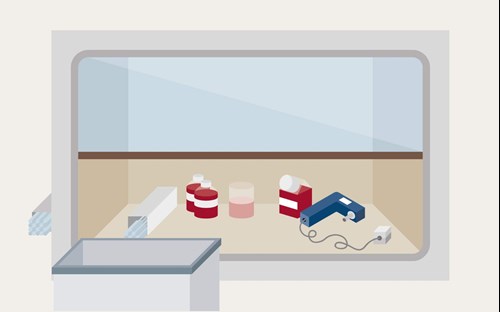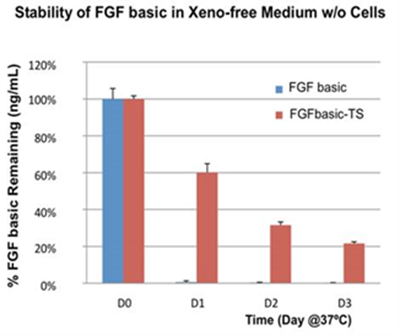Introduction to Cell Culture
| Cell Culture Contents | |
| What is cell culture? | Cell culture aseptic technique |
| Cell culture equipment | Cell culture environment |
| Cell culture safety | Media supplements for cell culture |
What is cell culture?
Cell culture is the growth of cells from an animal or plant in an artificial, controlled environment. Cells are removed either from the organism directly and disaggregated before cultivation or from a cell line or cell strain that has previously been established.
Certain culture conditions depend on the cell type, however, each culture must consist of a suitable vessel with a substrate or medium that supplies the nutrients (such as amino acids, carbohydrates, vitamins, minerals), growth factors or essential hormones for culturing cells. Gases (O2, CO2), physicochemical environment (pH, osmotic pressure, temperature) also play an important role to regulate the proper cell growth in an artificial environment.
Cell culture applications
-
Is a major consistent and reproducible tool in molecular and cellular biology.
-
Helps to study normal cell homeostasis, cell biochemistry, metabolism, mutagenesis, diseases, and compound effects.
-
Is a model system for diseases and drug screening.
Basic cell culture equipment
The specific equipment of a cell culture laboratory depends on the type of research conducted however, all cell culture laboratories have the same common goal: being free from pathogenic microorganisms.
The extended list below is corresponding to the equipment and supplies for the majority cell culture laboratories, that allows the work to be more efficient and accurate.
 |
- 70% ethanol antiseptic | - Cell incubator |
| - Aspiratory pump | - Centrifuge | |
| - Autoclave | - Fridge/freezer | |
| - Cell counter | - Gloves | |
| - Cell culture flasks | - Media, sera, cell media additives | |
| - Cell culture-grade Petri dishes | - Pipettes of various capacities | |
| - Cell culture-grade tubes of various sizes | - Serological pipettor | |
| - Cell culture hood | - Sterile filters | |
| - Cell culture microwell plates | - Waste container |
*Please note: The specific cell culture equipment depends on the cell type and aim of the study
Cell culture safety
Work in a cell culture laboratory is associated with different risk factors and hazards such as toxins or mutagenic reagents. The human/animal material may contain viruses and other dangerous biological agents. Therefore, while manipulating human/animal material it is important to follow general safety guidance for laboratory practices.
1. Wash hands when entering and before leaving the laboratory.
2. Wear safety clothes (gloves, closed shoes, lab coat).
3. No eating, drinking, smoking.
4. No or low aerosol creation.
5. Decontaminate all surfaces before and after the experiment.
6. Work in accordance with the facility guidelines.
7. Dispose of all waste in an appropriate way.
8. Restricted access to authorized personnel only.
9. Avoid using sharp objects.
10. Always clearly label all samples.
11. Report all incidents to the safety officer.
Aseptic techniques required while working with cell culture
To be successful in cell culture, it is essential to remain a contamination free environment (bacteria, fungi etc) Aspetic techniques ensure that no microorganisms enter the cell culture. Cell culture sterility is ensured by set of procedures.
Aseptic techniques required while working with cell culture.
| Handling | Reagents/Media | Workplace |
| Slow/careful handling. | Pre-sterilisation of all reagents/equipment | Cell culture hood works properly |
| Sterilization of all items before starting. | No contamination in reagents (expiration date, appearance normal). | Frequent de-contamination (hood, fridge etc) |
| Sterile pipettes | Work area: sterile and tidy | |
| No touching of sterile items to non-sterilized surfaces |
Cell culture environment
Cell culture is an amazing tool that allows for easy control and manipulation of all physiochemical and physiological cell factors, such as, temperature, osmotic pressure, pH, gas, hormones, and nutrients.
Cell culture environment.
| Media | pH | Temperature | CO2 |
| Contains nutrients, growth factors, and hormones | Average pH for mammatian cells is pH 7.4 | Depends on body temperature of the host | Controlled by media |
| Sera source of growth, tipids,hormones | Mammalian cell lines 36-37°C | Organic or C02 bicarbonate buffer systems are popular | |
| Insert cell lines 27-30°C | Can impact pH | ||
| 4-10% C02 is most common |
Media supplements for cell culture
Media supplements help to optimize cell growth for specific applications depending on the chosen tissue or cell type. The advantages of using media supplements such as growth factors or cytokines are that they may improve cell viability and growth and keep cells healthier for longer. For example, fibroblast growth factor (FGF) plays important roles in diverse biological functions in vivo and in vitro and can maintain cell culture over the weekend as Proteintech thermostable FGF (HZ-1285) does not require media changes every day.
 |
The stability of FGFbasic-TS and FGF basic (E. coli-derived) in xeno-free, chemically defined cell culture media at 37˚C. The protein concentration was determined by ELISA each day for 3 days. After one day of incubation at 37˚C, FGF basic was undetectable, while FGFbasic-TS was present at levels of 60%, 35%, and 20% of its starting concentration at days 1, 2, and 3. |
Growth factors play an essential role to maintain the in vitro culture growth. Depending on the environment, certain cells can give rise to a variety of lineage-specific cell types. See below a summary of the key growth factors needed for normal cell growth, metabolism, cell development in culture and their differentiation process.
| Supplement | Cat no | Involved in/used for |
| Fibroblast growth factor (FGF) | HZ-1285 | Embryonic development, neuron differentiation, and the proliferation of cells of mesodermal origin and many cells of neuroectodermal, ectodermal, and endodermal origin. |
| Bone morphogenetic protein 2 (BMP-2) and bone morphogenetic protein 4 (BMP-4) |
Bone formation and regeneration. Uses as differentiationfactor of pluripotent stem cellsand promotes osteogenic differentiation of mesenchymal stem cells |
|
| Hepatocyte growth factor (HGF) | HZ-1084 |
Epithelial-mesenchymal transition. Acts as a mitogen for many cell types including hepatocytes |
| Granulocyte-macrophage colony-stimulating factor (GM-CSF) | HZ-1002 |
Promoting growth and differentiation of hematopoietic progenitor cells. Used to support the in vitrocolony formation of granulocyte-macrophage progenitors. |
| Activin A | HZ-1138 |
Regulating cell proliferation. Used to maintainstem cell pluripotency and self-renewal in vitro |
| Beta-nerve growth factor (beta NGF) | HZ-1222 | Differentiation and survival of neurons |
| Stem cell factor (SCF) | HZ-1024 | Promoting survival, expansion,and differentiation of hematopoietic stem cells. |
| Transforming growth factor beta (TGF-beta) |
Regulating cell growth, proliferation,and differentiation. Widely used, e.g.,in undifferentiated embryonic stem cellcultureand induced pluripotent stem cells |
|
| Vascular endothelial growth factor (VEGF121 and VEGV165) |
Angiogenesis and vasculogenesis. Used in endothelial cell culture. |
|
| Wnt3a | HZ-1296 |
Regulation of neuronal stem cell self-renewal. Used in expansion of neural stem cells |


